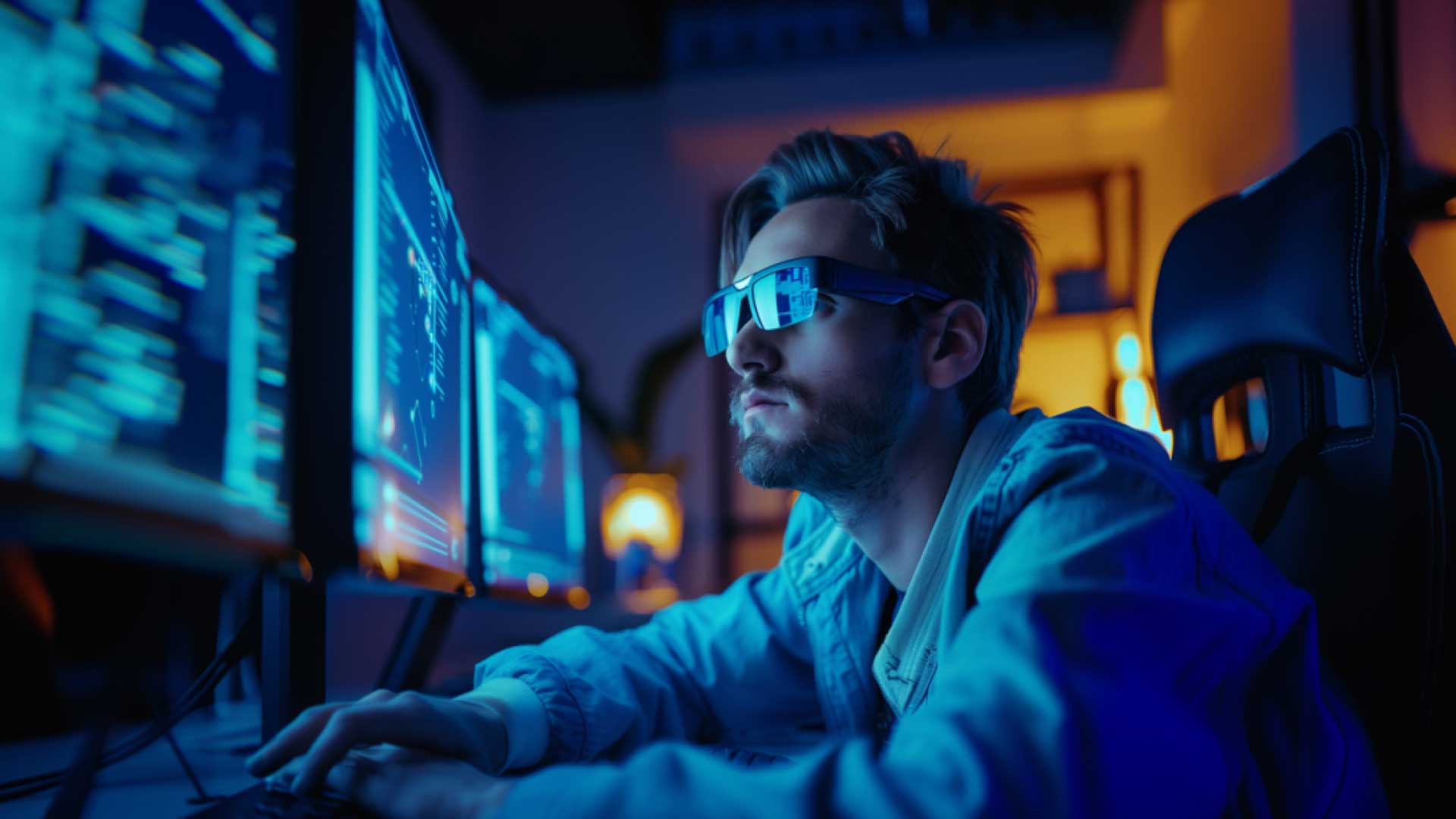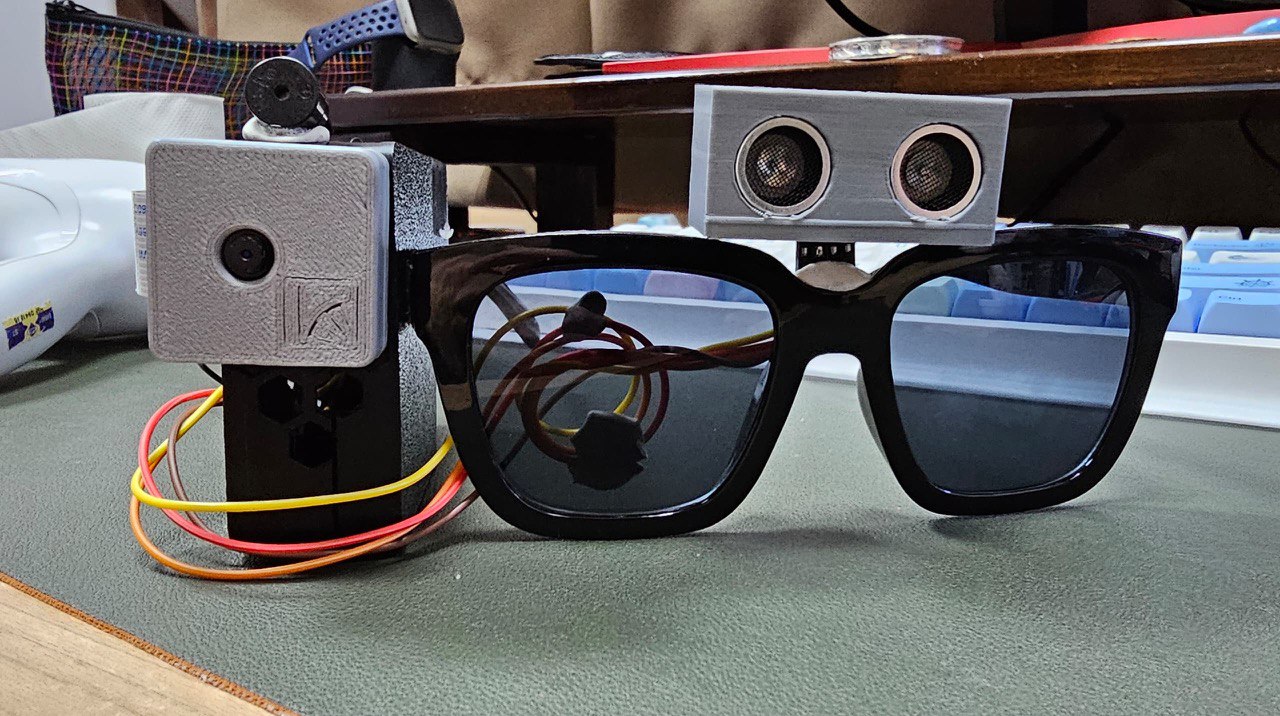AI-Powered Visual Aids: The Next Step in Assistive Technology for the Blind
Discover Advanced Assistive Gadgets for Individuals With Aesthetic Problems
The landscape of assistive modern technology for people with visual disabilities is developing quickly, providing a series of innovative tools that boost freedom and interaction (Braille displays and notetakers). From smart glasses that seamlessly merge visual input with acoustic support to advanced navigating applications that redefine spatial recognition, these devices are improving possibilities. The most current developments in Braille modern technology and voice-activated systems substantially add to access. The effects of these growths expand far past mere capability; they challenge standard understandings of special needs and freedom. What might this imply for the future of inclusion and assistance?
Smart Glasses Innovations
Smart glasses stand for a substantial improvement in assistive modern technology for individuals with aesthetic disabilities. Furnished with video cameras and sensors, clever glasses can capture real-time visual details, which is then refined and shared to the individual via sound comments or haptic experiences.
Furthermore, innovations in expert system have actually further boosted the capacities of clever glasses. Device understanding formulas can acknowledge faces, read message, and recognize items, making them very useful tools for everyday jobs. Users can receive auditory cues that offer context about their atmosphere, fostering independence and confidence.
Additionally, the ergonomic design and lightweight nature of numerous clever glasses make them suitable for extended usage, guaranteeing comfort while improving functionality. As these gadgets proceed to develop, they hold the possible to change the way individuals with visual impairments experience their day-to-days live, bridging the void between availability and innovation. The continuous study and advancement in this area pledge to broaden the possibilities for clever glasses, making them an important element of contemporary assistive tools.
Navigating Apps and Devices
Countless navigating applications and devices have emerged as vital sources for people with visual disabilities, significantly boosting their ability to go across unknown environments. These modern technologies take advantage of general practitioner performance, audio hints, and real-time information to give customers with accurate navigation aid.
One noticeable example is the Aira app, which attaches customers to experienced agents who can provide aesthetic descriptions of environments and navigation advice through a real-time video clip feed. This service boosts the individual's spatial understanding and confidence while navigating. One more remarkable device is Seeing Eye GPS, which supplies voice-guided navigating and factors of passion, making it possible for customers to gain access to important information concerning their environments.

As innovation remains to advance, the advancement of more sophisticated navigating devices promises to further equip people with visual impairments, helping with seamless flexibility and integration right into diverse settings. Such innovations contribute in promoting an extra inclusive culture.
Braille Innovation Innovations
Recently, improvements in Braille technology have actually considerably changed just how people with visual problems access details and engage with the world around them. The development of portable Braille displays has changed reading by allowing individuals to link wirelessly to tablet computers, computers, and mobile phones. These gadgets convert message into Braille in real-time, allowing smooth interaction with electronic material.
Furthermore, ingenious Braille printers have actually emerged, enhancing the production of tactile materials. Modern embossers are quicker and a lot more efficient, enabling the rapid creation of Braille papers and educational products. This efficiency lowers the time and cost connected with generating Braille sources, making them a lot more easily accessible to companies and colleges.
Furthermore, the integration of Braille with other innovations, such as expert system and artificial intelligence, has actually opened up new methods for individualized learning experiences. Voice acknowledgment and synthesis innovations can match Braille, giving a comprehensive technique to details circulation.
As the demand for inclusive education and workplace settings grows, these technological innovations play a crucial duty in encouraging individuals with visual disabilities, ensuring they have equivalent accessibility to details and chances in numerous aspects of life.
Wearable Instruments for Independence
An expanding selection of wearable gadgets is boosting you could check here independence for individuals with aesthetic disabilities, offering cutting-edge remedies that improve navigation and day-to-day living. Braille displays and notetakers. These devices use innovative modern technologies to provide real-time responses and assistance, advertising autonomy in numerous atmospheres

Wearable technology likewise consists of smartwatches that can be programmed with availability attributes, allowing customers to get notifications, track their places, or perhaps require support with the touch of a button. Some gadgets integrate fabricated intelligence to analyze the environment, offering audio descriptions of close-by things or people.
Voice-Activated Assistive Solutions
Leveraging voice-activated assistive services has actually changed the landscape of support for individuals with visual impairments, giving hands-free interaction and accessibility to a selection of tasks. These modern technologies make use of all-natural language processing and man-made knowledge to make it possible for individuals to do everyday activities through easy voice commands.

In addition, current developments in voice acknowledgment accuracy have actually boosted the individual experience significantly, accommodating diverse accents and speech patterns. This inclusivity other makes sure that even more individuals can benefit from these modern technologies, cultivating a better sense of freedom.
Verdict
To conclude, the advancement of advanced assistive tools substantially boosts the independence and lifestyle for individuals with visual problems. Advancements such as wise glasses, navigation applications, Braille modern technology, wearable tools, and voice-activated services jointly promote an even more inclusive atmosphere. These modern technologies encourage customers to browse their environments with self-confidence and involve more completely with the globe, inevitably promoting greater availability and equivalent chances for people facing aesthetic challenges.
The landscape of assistive innovation for individuals with visual disabilities is evolving rapidly, presenting an array of innovative gadgets that enhance autonomy and involvement.Smart glasses represent a substantial advancement in assistive modern technology for individuals with visual problems. As these tools proceed to progress, they hold the possible to change the way individuals with aesthetic problems experience their daily lives, connecting the space between availability and technology.In recent years, improvements in Braille technology have considerably transformed exactly how people with aesthetic disabilities accessibility details and involve with the world around them. These modern technologies equip users to browse their surroundings with confidence and involve more fully with the globe, ultimately promoting greater accessibility and equal opportunities for people facing aesthetic challenges.